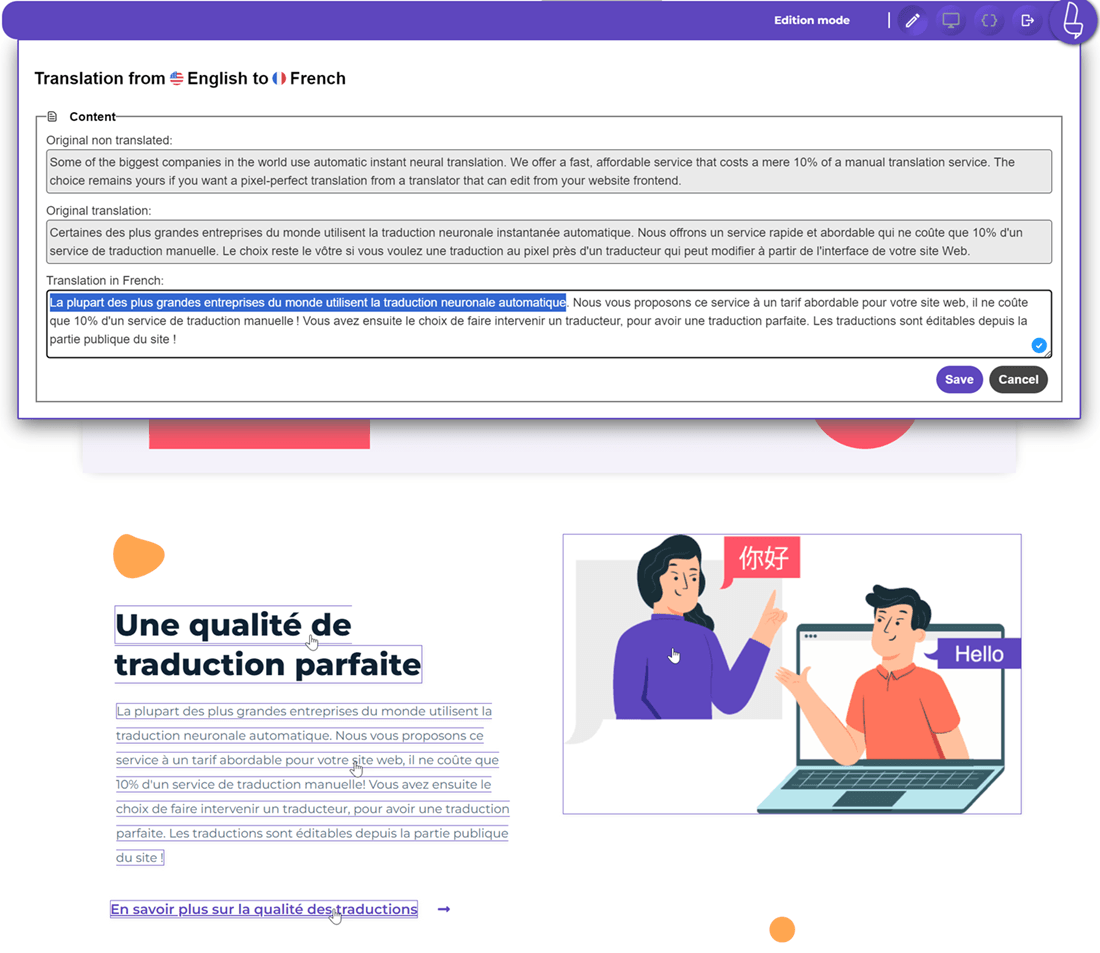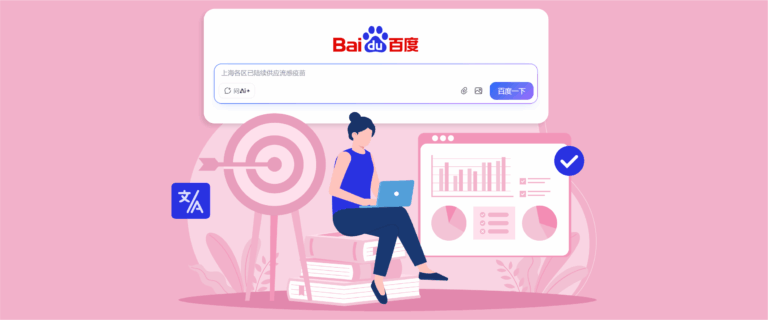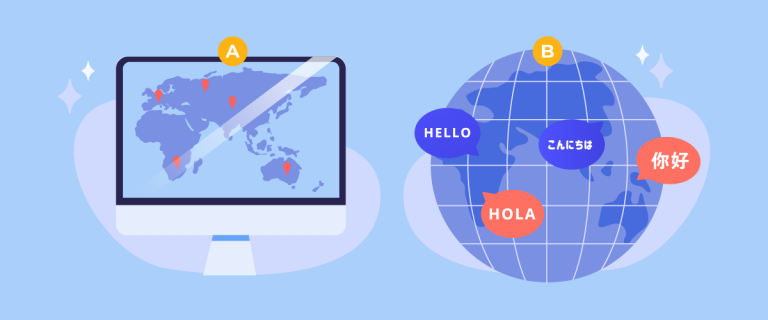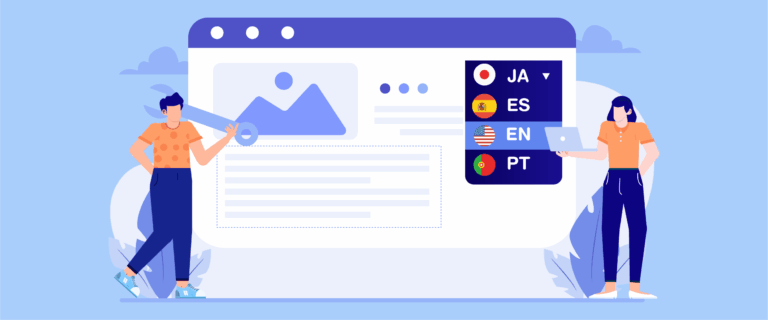You own a multilingual BigCommerce website and want to increase the number of visitors without having to rely on constant paid advertising? One of the most effective ways is to optimize multilingual content. By presenting content in multiple languages, you can open up greater opportunities to appear in local search results-which means a significant increase in organic traffic.
In this article, we will discuss how multilingual content can be an important strategy to bring more visitors to your BigCommerce online store. From content planning to technical implementation, you’ll find practical steps to strengthen your business’ presence in the global market.
Why does multilingual content matter in BigCommerce?

Multilingual content can be a strategy that can help your BigCommerce store reach more customers, build trust, and grow faster in the global market. Here’s why delivering content in multiple languages is crucial to your international e-commerce success.
- Open opportunity to the global market – Providing content in multiple languages allows you to reach customers from different countries who might not otherwise be able to understand your offerings.
- Rank higher on local search engines – With content optimized for multiple languages, your store is easier to find in local search results, which helps increase website traffic significantly.
- Build comfort and trust – Customers will feel more connected and trusting when they can browse and shop in their own language.
- Drive higher conversion rates – Easy-to-understand product descriptions in a customer’s native language can reduce hesitation and increase the likelihood of a purchase.
Strategies for developing multilingual content on BigCommerce

Developing multilingual content for a BigCommerce store requires the right strategies to make it not only readable, but also relevant and engaging for a global audience.
The following are key strategies for developing multilingual content that can help increase organic traffic and create a better user experience in international markets.
Identifying your target markets and relevant languages

To ensure that your multilingual strategy is truly effective, you need to analyze several key aspects of your target market. This step will help you determine which languages should be prioritized and how you can craft content that resonates with those audiences. Here are the key elements to analyze:
- Geographic origin of visitors: Check which countries or regions are generating the most visits to your site using Google Analytics. A traffic spike from a specific country could indicate that the market is worth focusing on.
- Sales volume and trends by country: This analysis is crucial to determine whether a market is merely curious or has high conversion potential. If a significant number of purchases come from a certain country, consider providing content in their language.
- Local search demand (multilingual keyword research): Use tools like Google Keyword Planner or Semrush to find out if people are searching for your products in other languages, and how large the search volume is.
- Competitors already using a multilingual strategy: Check if competitors in your industry have multilingual websites and how they’re targeting those markets. This can give you insights into whether you’re falling behind or have the chance to be a first mover in your niche.
By analyzing the data above, you can establish clear priorities. For example, if you’re receiving a lot of traffic from France and it shows high conversion rates, offering a French version of your site could have an immediate impact on sales. On the other hand, if there’s traffic from another country but no conversions, it may be better to stick with English while strengthening your branding.
This approach also helps you avoid wasting resources on translating into languages that aren’t needed. Focusing on markets with real growth potential will make your multilingual content strategy far more effective and efficient.
Create SEO article friendly content
Creating SEO-friendly articles in every language version is very important to help your content appear on the top pages of search results, thereby increasing organic traffic. With this strategy, your online store can achieve better rankings on Google and other search engines, increasing the chances of being found by potential customers from various countries.
Here are some key elements for creating SEO-friendly content.
- Keyword distribution: Keywords should be naturally placed throughout the article—in titles, intro, body, and conclusion—to help search engines understand your topic without keyword stuffing, ensuring good readability and indexing.
- Internal links: Linking to other relevant pages in your store improves user navigation, keeps visitors longer, and helps search engines crawl your site better, boosting overall SEO authority.
- Keyword in URL slug: Including main keywords in the URL slug makes URLs clear and memorable for users and search engines, improving click rates and search rankings.
- Relevant meta description: Write concise, keyword-rich meta descriptions that attract clicks by summarizing the page content and encouraging users to visit, increasing your site’s CTR
- Use of subheadings (H1 to H4): Organize content with clear subheadings (H1 for main title, H2-H4 for subsections) to improve readability and help search engines understand your content hierarchy, which enhances SEO and user experience.
Choosing the right translation and localization approach
Choosing the right translation method is crucial in multilingual content development, especially for e-commerce such as BigCommerce. Each method-automatic, manual, and hybrid-has advantages and disadvantages depending on your needs, budget, and expected quality. Here’s a further explanation of the three methods.
- Automatic translation: Using tools like Google Translate to translate multiple products quickly and at low cost. However, the results are often less precise, especially on product descriptions and e-commerce-specific terms, which can be confusing for customers.
- Human translation: Performed by professional translators who understand the culture and market context. Suitable for important content such as homepages and featured products because the results are more natural and convincing, although it takes more time and costs more.
- Hybrid translation (combined automatic + manual revision): Combines automatic translation with manual revision. Suitable for large stores to quickly launch many products while maintaining quality, especially in popular product descriptions or marketing content. An example of a feature that combines automatic and manual revision is Linguise’s live editor, which allows you to easily edit your translations.
Creating culturally appropriate and market-relevant content
Content that works in one country may not necessarily be effective in another due to differences in culture, habits, and consumer preferences. For example, a formal and polite communication style is more acceptable in markets like Japan or Germany, while in Latin America or Australia, a more casual and friendly style is more appealing to customers.
In addition to language, visual elements such as product images, colors, and symbols also have different meanings across cultures-for example, the color white in some countries symbolizes purity, but in others it can be associated with grief. Ignoring this can make your online store seem less relevant or even offensive to your audience.
By creating culturally tailored content, you show that your online store truly understands and appreciates the needs of its visitors. This not only increases customer comfort and trust, but also strengthens long-term loyalty. In the context of e-commerce, a high level of trust directly contributes to increased conversions-customers are more likely to make purchases, come back, and recommend your store to others. So, content localization is not just about language, but building an emotional connection and the right shopping experience in each market.
Localizing key e-commerce elements

Localizing key elements in e-commerce means adjusting key parts of an online store to make them more relevant to users in each market. It’s not enough to simply translate text-every element that users interact with directly needs to be culturally and linguistically adapted so that the message is truly effective and not confusing. Here are some e-commerce elements that need to be localized.
- Product page: Product descriptions, measurements (e.g. inches vs. centimeters), currency, and units of weight should be adapted to local standards. Even certain product terms or features may differ depending on market preferences.
- Promotional banners and visual content: Promotional text on banners should match the local communication style. Images also need to be customized-model, lifestyle, or setting can affect the customer’s perception of the product.
- Call-to-Action (CTA): Texts such as “Buy Now”, “Add to Cart”, or “Get Yours Today” should be translated in a style that appeals to each market. For example, overly aggressive CTAs may not be suitable for more conservative cultures.
- Navigation and menus: Product category titles, filters, and labels should be accurate and familiar to local users to keep the shopping experience seamless.
- Payment methods and shipping information: Displaying local payment options and realistic shipping estimates will increase buyer trust and convenience.
Ensuring consistency and quality across all language versions
Maintaining consistency and quality across all language versions is essential so that every visitor, from any country, has the same good experience. Inconsistent content can confuse users and decrease trust in your online store. For example, if product terms differ across languages or call-to-action (CTA) buttons are translated in a non-uniform style, it can have an impact on purchasing decisions.
One of the most effective ways to maintain consistency is to create a language style guide and a glossary of fixed terms. This guide contains writing rules, tone of voice, terms that should be retained, and common formats such as numbers, dates, or units. This is especially useful when you are working with different teams or using mixed human and machine translation methods.
The following steps can help ensure quality is maintained.
- Create an organized translation and revision process so that every piece of published content is checked.
- Review manually or use a testing team of language professionals to ensure there are no language, context or page layout errors.
- Engage users from each region to assess whether the content is easy to understand and relevant to them.
Regular content updates in all languages
In e-commerce industry, information gets outdated quickly. Products change, deals change, and market trends move fast. That’s why it’s important to update content regularly, including for all language versions of your BigCommerce site. This is not just about adding new products, but also updating descriptions, prices, promotional banners, and blog posts with the latest information.
Updated content shows that your store is active and trustworthy in the eyes of both customers and search engines. It also prevents information discrepancies between language versions, which can confuse users. For example, if there’s a new discount, it should also appear on the page in Spanish, German, and others-not just in the main language.
Implementing multilingual capabilities in BigCommerce

Once the content strategy is in place, the next step is to technically implement multilingual features on the BigCommerce platform. This process includes tool selection, language structure setup, and optimization for SEO to keep your site discoverable across multiple language versions.
Using third-party translation and localization apps

BigCommerce does provide built-in multilingual features, but it’s not that comprehensive, so many store owners utilize third-party apps. These tools simplify the process of automatic and manual translation, while managing multiple language versions in one dashboard.
These apps usually offer features such as automatic language detection, text string management, and direct integration with store pages and product catalogs. This is especially helpful if you have a lot of pages or products to translate.
One example of an automated tool that you can consider is Linguise, which offers instant translation, SEO compatibility, and easy integration with BigCommerce.
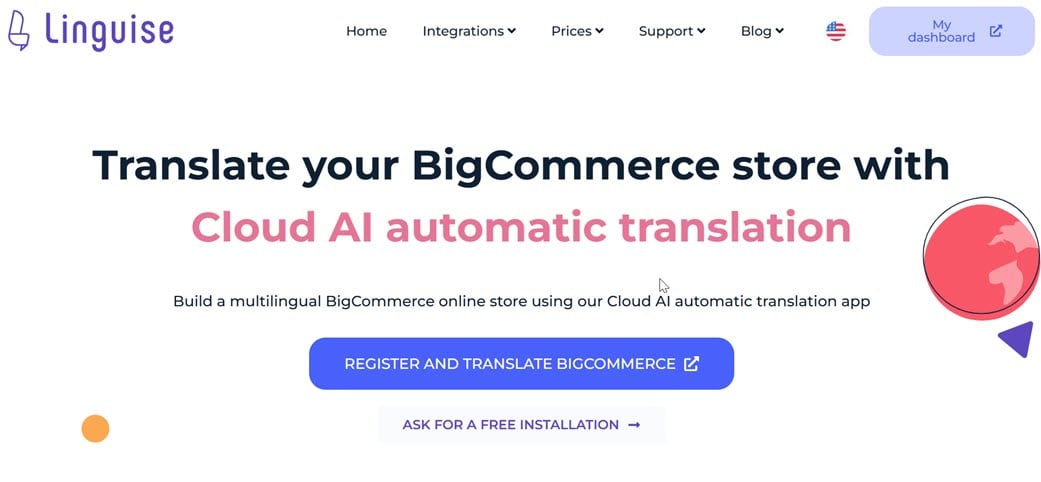
Choosing the right language structure
The language structure you choose for your BigCommerce store will significantly affect how search engines index your site and how users navigate different language versions. This decision directly impacts SEO performance and, ultimately, the amount of organic traffic your online store receives from various regions. The right structure will make your content more discoverable by international audiences and ensure a consistent user experience across all language versions.
Language structure refers to how URLs and navigation are organized for each language version. Generally, there are three options: subdirectories, subdomains, and separate domains. Each comes with its own advantages and challenges depending on your SEO strategy, ease of management, and the scale of your e-commerce business. Here’s a brief comparison.
- Subdirectories (yourstore.com/id/): Ideal for small to medium-scale businesses. Easier to manage since everything stays under the main domain, and SEO authority remains centralized.
- Subdomains (id.yourstore.com): Offers flexibility in managing and personalizing content for each language, but requires separate SEO efforts as Google treats it as a different site.
- Separate domains (yourstore.id): Creates a strong local presence and is suitable for large brands. However, it demands more effort for management, separate SEO development for each domain, and comes with higher costs.
Make sure the structure you choose is consistent and SEO-friendly, as it also affects integration with tools like Linguise.
Implementing hreflang tags for SEO optimization

Implementing hreflang tags is an essential step for SEO optimization when managing multilingual content on your BigCommerce store. These tags help search engines understand which language and regional version of a page to show to users based on their location and language preferences. Without proper hreflang implementation, search engines might display the wrong version of your page or even consider different language pages as duplicate content, which can hurt your SEO rankings. Here’s what hreflang tags do for your e-commerce site.
- Guide search engines to the right audience – Hreflang tells Google which page version is intended for which language and region, improving the relevancy of search results.
- Prevent duplicate content issues – By clearly signaling language variations, hreflang avoids penalties caused by identical content appearing on different URLs.
- Improve user experience – Visitors are directed to the version of your store in their language, which increases engagement and reduces bounce rates.
Implementing hreflang tags requires adding specific HTML attributes or HTTP headers that specify the language and optional region of each page. It’s crucial to keep these tags consistent across all language versions to avoid confusion for search engines. Some multilingual tools, including automatic translation platforms, can help manage hreflang tags efficiently—ensuring SEO remains optimized as you expand your global reach.
Testing and maintaining multilingual functionality
Testing and maintaining multilingual functionality is crucial to ensure your BigCommerce store runs smoothly across all language versions. After setting up multilingual content and technical elements like hreflang tags, it’s important to regularly check that everything works correctly—from navigation menus and product pages to checkout processes in each language. This helps prevent issues that could frustrate customers or harm your SEO. Key areas to test include.
- Language switching: Ensure users can easily switch between languages without losing their place or encountering errors.
- Content accuracy: Verify that translations display properly and that no untranslated or broken text appears.
- Functional elements: Check that buttons, forms, and payment gateways operate correctly in all languages.
Maintenance also involves updating translations when adding new products, promotions, or site features. Regular audits can catch inconsistencies or outdated content, keeping your store fresh and relevant. Consistent monitoring and updates help deliver a seamless shopping experience that boosts customer trust and supports ongoing organic traffic growth.
Conclusion
Developing multilingual content is one of the most effective ways to sustainably increase BigCommerce organic traffic. By understanding the global market and implementing the right translation and localization strategies, you not only reach a wider audience, but also build a relevant and trustworthy shopping experience in different countries.
When you start customizing the content and essential elements of your online store for each language and culture, you open up higher conversion opportunities while strengthening your brand presence in international markets. Start now with Linguise to translate your BigCommerce store automatically, quickly, and SEO-friendly-and experience the impact on your global traffic for yourself.


